Khaos [they/them]I draw nerdy mythology art18y•🇧🇷•PT/ENG
Don't wanna be here? Send us removal request.
Text
Thinking about the sexual tension in La Terreur et La Vertu, between Robespierre and everyone else...except Danton







364 notes
·
View notes
Text
How to search for a specific document on the French National Archives website?
I'm going to use this post by @montagnarde1793 as an example because it's very convenient for me: she perfectly noted the archive's class mark and she chose a document that requires going through several files.
Here we have a letter from the Comité de Salut Public by Barère, Prieur de la Côte d'Or and Billaud-Varenne and adressed to Prieur de la Marne. The details are as follows:

There is a lot of informations. They have to be decoded one by one. For now, only those details are important :

"AN" means "Archives Nationales". So the virtual reading room of the Archives Nationales is the most suitable website to conduct researches if you live far away from Paris and cannot go directly. This is what their home page is supposed to look like.

Okay now, remember the following numbers provided by montagnarde1793 right after the "AN" ? "AF II 37" ? This is the archive's class mark, its identity card. Now, we are going to use it.


Now, we see that that we put the right number and it is giving us the following information : the letter comes indeed from an archival fund produced by the Comité de Salut Public, it is stored in Saint-Denis, and it is available to be "Reserved" or "Added to the class marks cart". For now, we ignore those. We only click on the number.

And here appears a problem: the number exists twice, in two different places. I started by looking at the first fund, but it soon became clear that it didn't contain what I was looking for (here, the AF/II/37 call mark referred to naval affairs, which doesn't correspond to the document published by montagnarde1793), so the right link must be the second one.

So we click on the second link and we end up on this page.

We don't care about the general presentation of the fund because we are searching for a specific item so we directly go to dig into the details.
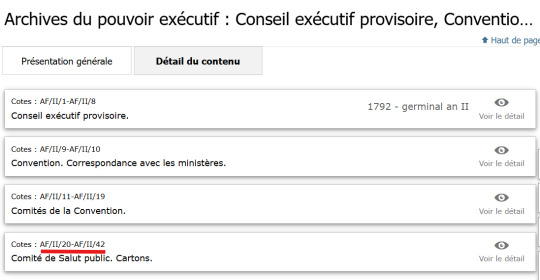
Okay. We know we have to click on the last link titled "Comité de Salut public. Cartons." because we already know the letter we are looking for is a CSP document and AF/II/37 is obviously somewhere between AF/II/20 and AF/II/42. And now we keep searching for AF/II/37 until we find it.
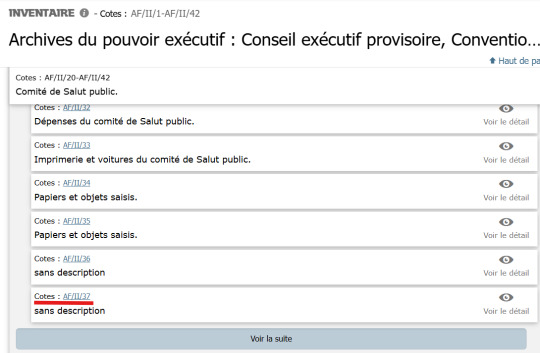
Now, remember the informations provided by montagnarde1793 ? The rest of the numbers is finally going to be useful.

Oh, it's here !
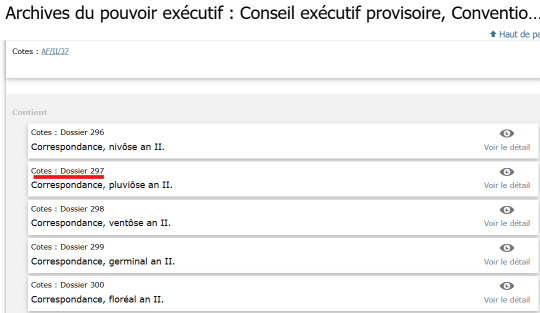
And finally :

AHAH, HERE IT IS !

And you found the document. Good job ! <3
114 notes
·
View notes
Text

Happy gays Valentine's Day!
972 notes
·
View notes
Text

"shall we split the boy too?"
93 notes
·
View notes
Text
......so no one asked for this but Vampire Robespierre x SJ nsfw below......

idk they are endearing to me i like the idea of robespierre overcoming his reservations after vampirism and finally bold enough to chase the angel of his dream and being a top sometimes *faints*
115 notes
·
View notes
Text

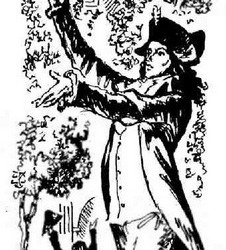











L.P. Durasov's illustrations from A.P. Levandovsky's book "The triumvirs of the Revolution" (1980).
488 notes
·
View notes
Text
On the Origins of the Terrorist
(Originally written as a reply to this comment.)
If you live anywhere in the Anglosphere, you might have learned about something that happened during the French Revolution as "the Reign of Terror".
95% of what you think you know about this is most likely false. The British propaganda built to distort and demonize the French Revolution was one of the most successful in history.
See, the British Empire and their successor the American Empire need you to believe that the French Revolution was a chaotic, repugnant bloodbath that accomplished nothing. It's actually explained in one chapter of the book by Domenico Losurdo (Liberalism: A Counter-History) I mentioned earlier:

Now let's go back a bit and talk about the Terror.
First things first, I know you all call it "the Reign of Terror" and I sound like I'm nagging when I say this but: stop calling it that. Terror doesn't reign. It doesn't make sense. The French don't call it that. It's exclusively an Anglophone term to make it sound more sinister.
What you've probably heard is this: there was some guy named Robespierre who went insane, made himself dictator, and killed everyone who disagreed with him via guillotine.
Well, none of that is true.
What we call the Terror (French: la Terreur) is an ill-defined period that's usually set to begin on 5 September 1793 and ends on 28 July 1794.
On 10 August 1792, the palace of the Tuileries was stormed. This event put an end to the regime of constitutional monarchy they had been trying to establish so far, but failed for many reasons including the fact Louis XVI was never truly in favor of that, as he proved when he tried to run away from France to join the enemy they were at war with but was caught on 20 June 1791. The chief of State running away to join the enemy - led by his brothers in exile, his wife's family and their many supporters - is obviously a very bad thing that broke everyone's trust in him. The fact he kept vetoing a series of measures in 1792 didn't help either. Nor the fact that on 25 July 1792, the Duke of Brunswick, commander of the Prussian and Austrian armies, issued a manifesto threatening "unforgettable vengeance" against all of Paris if harm or humiliation was to be done to the royal family. The Parisians, quite naturally, Did Not Like That. At all. So they did the very thing this douchebag was threatening them not to do: they stormed the palace where the royal family lived, took them prisoners, and led them to the Assembly where the people demanded action. The monarchy was abolished. A new Assembly was convened, the National Convention, to create a constitution for the new regime, a Republic.
The first months of the National Convention were mostly busy trying to figure out what to do with the king. They put him on trial - arguably one of the first trial for crimes against humanity as the monarchy itself and the position of king were seen as such. He was found guilty and executed on 21 January 1793.
The next few months were busy working on the Constitution but were also marked with severe conflicts within Paris and in all of France. War was still raging at the borders - France was being invaded by a coalition of all the monarchs of Europe who saw the new Republic as an obvious threat to their power. An assembly mostly made of commoners had executed a king who used to derive his power from divine right. The Kingdom of France was one of the most powerful defenders of Rome and Catholicism. The French Revolutionaries had declared an end to The World That Was And Seemed Would Be Forever. It was absolutely devastating to all of Europe and had an impact across the entire world. Saint-Domingue rose up in insurrection in 1791 and became the Republic of Haiti in 1804. The entirery of the status quo was thrown into chaos with both commoners and slaves rising up and demanding power and equality. Capitalism, which was in its beginning stages, was also threatened. This is when conservatism was born as an ideology, and I love linking this video as it does a far better job at explaining it than me:
youtube
So to sum things up: most of the world wanted to crush the French Republic. The armies of Europe were marching on them. And because things weren't hard enough, civil war broke out from within with different factions with different goals. By the time the National Convention finally finished and proclaimed the Constitution of 1793 on 24 June 1793, one of the most progressive that existed at the time in the world which proclaimed the right to insurrection in its Declaration of Rights (art. 35) and added protections for socio-economical rights that would not be considered again until the 20th century, the state of France was on the brink of disaster. They had to proclaim a state of emergency - something that most liberal democracies accept (and often abuse) nowadays but bizarrely refuse to consider as "justified" for the First French Republic.
Because this state of emergency is what you've learned to call "the Reign of Terror".
What it actually was though was a series of laws and measures taken to fight the wars raging inside and at the borders.
Power started to be focussed on an entity called the Committee of Public Safety (French: Comité de salut public, hereafter referred to as the CSP), which basically micromanaged all of France to fix all of the problems. The CSP was first controlled by a political group that came to be known as the Girondins. (France did not have political parties then as we do now.) The Girondins were in a lot of problems because they had defended the king and tried to save his life. They were also more liberal than the more radical Montagnards. Internal fighting ensued. The Montagnards eventually took over, strongly supported by the working class of Paris rallied in what was called the revolutionary sections and the Commune of Paris as well as the Club des Jacobins, a political club of petit-bourgeois and artisans. They were strongly committed to the progressive principles of the Constitution, which basically created a sort of "Providential" or "Welfare State" that promised to keep the worst impulses of capitalism in check.
On 5 September 1793, the most radical groups of Paris stormed the Convention and demanded they take further action: they wanted a revolutionary army, which they got, and that "the Terror be put on the order of the day", which is much more ambiguous. Some historians claim it was approved. Others actually bothered to look into the very detailed accounts of the Assemblies and found out it was... a bit more complicated than that. Long story short: the CSP agreed to take new measures to take care of various urgent problems, notably food scarcity but also the punishment of those seen as responsible for this situation. On 10th October 1793 the Constitution was suspended "until peace" and a revolutionary government was proclaimed instead. The CSP became the de facto executive power - though if you want to go into strict terminology, they weren't really, as they emanated from the Assembly, thus the legislative branch. The executive, which used to be the king and his ministers, and had understandly lost all trust from the Assembly, was progressively emptied of its power and had it transferred to the CSP. The second most important committee at the time, the Committee of General Security (French: Comité de sûreté générale, hereafter referred to as CSG) was put in charge of overseeing the judicial process via the Revolutionary Tribunal.
On 5 September 1793 was also when two more radical deputies, Collot d'Herbois and Billaud-Varenne, were added to the CSP which remained mostly the same in composition until 28 July 1794, except from one member, Hérault-Séchelles, who resigned in December 1793 and was later arrested and executed in the Spring of 1794. (Or he tried to resign, they didn't accept his resignation, so he just stopped attending. There's a lot of drama happening.)
The members of the CSP who oversaw the period known as "the Terror" were: Bertrand Barère, Robert Lindet (both elected in April 1793), Georges Couthon (May), André Jeanbon Saint-André (June), Pierre-Louis Prieur, Louis-Antoine Saint-Just (both elected on July 10), Maximilien Robespierre (July 26), Claude-Antoine Prieur, Lazare Carnot (both added in August) and finally Collot d'Herbois and Billaud Varenne (September).
As you might have noticed, Robespierre is only one member among 12 then 11. No, he was not the leader. It was collegial. They didn't always agree. He didn't always get his way - and everyone but two who died with him and the one who resigned survived him. Hérault's execution wasn't because Robespierre had a personal vendetta against him either.
So, what happened, and how does this connect with the creation of the term "terrorist"?
Well, long story short, the CSP struggled with typical inter-leftist fighting. They also fought with the CSG. They were all exhausted men pushed beyond their human limits, working at least 14 hours a day while being under the constant threat of assassination - and yes, there were attempted assassinations, it wasn't just paranoia. Things got Very Bad and distrust, more than terror, reigned among them. Envy too. See, Robespierre was never the leader of anything, but he had amassed a huge following and an impressive reputation since he had started fighting for the most marginalized all the way in 1789 when he was in the minority position in an assembly (the General Estates which became the Constituante) mostly made of notables with high-born nobles and wealthy bourgeois. So Robespierre became huge. He was popular. To many ordinary people who didn't quite get all the intricacies of collegiality, he was the CSP. He became a symbol. He embodied the most progressive principles of the Revolution, including those he was actually lukewarm about. Collot and Billaud were more to the left than him. While they could sometimes rally Saint-Just to their side, it was much harder to get Robespierre's approval. Robespierre had never been a good team player who did well on group projects. He was better at being the Lone Advocate who spoke against the oppressors. But now he was on the government. Ideological and personal conflicts soon ripped the CSP apart: on one side, there was Robespierre, who stopped attending the Committee entirely in the last month of his life. Saint-Just and Couthon were his allies and were left to deal with the others. Saint-André and one of the Prieurs had been dispatched to the West to oversee the war and the armies. Saint-Just was often dispatched to the East and the North. Couthon was disabled and suffered from pain in his legs which caused many absences. Soon from 12 to 11, the Committee was in the hands of only half of them: Barère, Lindet, Collot, Billaud, Carnot and the other Prieur. That Prieur and Lindet mostly did office work concerning the supplying of armies and civilians (food, gunpowder, weapons). Carnot oversaw the armies and though his work was supposed to be shared with Lindet, Prieur and also Saint-Just, he soon decided that it should be his domain. Prieur agreed. Saint-Just did not. Lindet was too busy trying to feed all of France to get into the bickering. Barère was the designated spokesperson who gave reports almost daily to the Convention about their work but also news from the war and all the generals and representatives dispatched in war zones who they corresponded with. As such, he was the official organ of government propaganda. Robespierre didn't always agree with what he had to say. Saint-Just didn't approve of how he overdid his praise of military victories, as all of them lived in fear of a Caesar rising from the generals (and wouldn't you know that, it did happen eventually). Collot and Billaud were rightfully bitter that Robespierre was willing to concede and compromise with centrists.
It was a huge fucking mess.
And so the six conspired with most members of the CSG and other representatives (who had gotten themselves into trouble for various reasons and feared justice was coming for them) to get rid of Robespierre and his allies Saint-Just and Couthon.
Because Robespierre had managed to piss off a whoooole lot of representatives during the last few months for a vast array of reasons, ranging from "petty and absurd" to "legitimately you might have a point", it actually wasn't that hard to turn the entire Convention against him. Propaganda had already been written against him by many of his political opponents through his career, from the Girondins to the Royalists including the British who had every reason in the world to take him down. (For one thing, he was a strong vocal opponent of slavery.) (And then there's this, too.) When he was executed on 10 Thermidor Year II or 28 July 1794, followed by a purge of hundreds of people who supported him who were either imprisoned or executed to, all the Convention had to do was to pick up the preexisting narratives circulating against him to build him up as The Most Evil Dictator of France. Why though? Well everyone had different ideas and the coalition that formed against him, known as the Thermidorians, divided just as fast.
There's also new propaganda they created that is to say they basically created "The Terror" as a specific period during which specific atrocities were committed. Because there had been many mistakes. The revolutionary government, the CSP, did not actually have the resources to centralize power as much as people later made up. The truth is there was a lot of chaos, and communication took a long time. Some representatives dispatched in the war zones to make sure the Revolution was respected had their own idea that didn't always align with others. They were left on their own and some did abuse their power, whether it was via corruption and bribes or a bit too much revolutionary zeal that led to controversial decisions that split up the Montagne itself (the dechristianization for example) and led to massacres.
They needed to explain what had happened. But the ones who had overthrown Robespierre were often the ones responsible for everything not going quite as well as planned. There had been war crimes. There had been sham trials. There had been bad laws that led to a spike in executions in June-July 1794. They needed a scapegoat, and Robespierre was perfect. And they needed to call his regime something: the Terror, which they retconned into a system Robespierre had been entirely responsible for. This was the brainchild and possibly the only legacy left by Jean-Lambert Tallien, a corrupt opportunist who had accepted bribes while on mission and was willing to do anything to keep his head no matter if it meant embracing and condoning a reaction that would do away with everything he once claimed to believe in:
"Citizens, everything you've just heard is but a commentary of what Barère has said on this rostrum about the system of the terror in the aftermath of Robespierre's death.
I will only add one reflection: this system was Robespierre's; it was him who put it in practice with the help of a few subalterns, among which some have perished alongside him, and others are buried alive underneath public contempt. The Convention has been a victim of it, never an accomplice. The country, Europe attribute to Robespierre the crimes it has caused, since it now gives to this infernal system the name of Robespierre. Public and particular resentments are pleased by the punishment delivered to this monster and his accomplices."
- Jean-Lambert Tallien, National Convention, Session of Fructidor 11 Year II (August 28, 1794)
But it wasn't enough.
All those who had been suspect and imprisoned were suddenly released after Robespierre's execution. They wanted revenge. Among them you had average people who no doubt had every right to be angry, but also the worst of reactionary scumbags who did want to destroy the Revolution.
And that is when the term "terrorist" was invented.
First it meant the partisans of the Terror, the partisans of Robespierre. But as the reaction progressed, it came to mean the leftists. Men and women, whether working class or bourgeois, who supported the progressive measures taken during the Terror were attacked and beaten in the streets. The popular cause was seen as synonymous with the Terror. These people were the first terrorists. The Club des Jacobins was attacked by a mob of right-wing youth, and the Convention didn't condemn this: they condoned it and ordered the closure of the Club on 12 November 1794. Soon, Collot and Billaud were arrested and deported to Guyana. Others too. The Girondins who had been under house arrest for a long time now rejoined the Convention. The right grew stronger. The Montagne was thinning in numbers and came to be mockingly called the Crest (la Crête). Those representatives still wanted all the social measures they had adopted during the Terror to continue - because even though the Constitution had been suspended, they still had adopted many of its progressive measures or were in the process to. But the working class had supported the Terror. The petit-bourgeois of the Club des Jacobins too. Supporting the Terror meant supporting bloodshed and also the rule of the poor over the rich. The right didn't want the Constitution of 1793 anymore. The liberals who used to support it abandoned it, perceiving it as the root cause for all of this "anarchy". By Spring 1795, after a terrible winter of starvation that wasn't helped by the new losers in charge deciding to deregulate everything and give capitalism a chance, the working class of Paris did rise up, demanding "bread and the Constitution of '93". And for the first time since 1789, it was defeated by the bourgeois who no longer aligned with them, on the 1st Prairial of Year III or 20 May 1795. It was the end of the popular Revolution. From now on, the Bourgeois didn't need the People anymore. The Revolution had finally truly been seized by the bourgeoisie. No more compromises. No more leftist policies. For a very brief moment there had been hope for a better world, but it had coincided with bloodshed - and it didn't matter that liberals had initially condoned this bloodshed when it suited them, because now they had convenient scapegoats to blame.
And that is why the political category of "terrorist" was created.
***
REFERENCES
Sophie Wahnich's La liberté ou la mort. Essai sur la Terreur et le terrorisme (2003) (transl. Liberty or Death. Essay on the Terror and Terrorism) which was officially translated to In Defence of the Terror: Liberty Or Death in the French Revolution with a foreword by Slavoj Zizek in 2012.
François Gendron's essential book on the Thermidorian Reaction: The Gilded Youth of Thermidor translated and published in 1993.
-> It was first published in Québec as La jeunesse dorée. Episodes de la Révolution française (1979) (transl. The Gilded Youth. Episodes of the French Revolution). It was then published in France as La jeunesse sous Thermidor (transl. The Youth During Thermidor). It has a complicated and controversial publication history explained here.
Dominique Godineau's Citoyennes Tricoteuses: Les femmes du peuple à Paris pendant la Révolution française (1988) which was translated to The Women of Paris and Their French Revolution (1998).
Jean-Pierre Gross's Fair Shares for All: Jacobin Egalitarianism in Practice (1997). You can download it for free via The Charnel House (link opens as pdf).
Michel Biard and Marisa Linton's The French Revolution and Its Demons (2021) which was originally published in French as Terreur ! La Révolution française face à ses demons (2020). (Here's the table of contents.)
-> This book explains Robespierre’s black legend, the conflicts between different political factions and clubs, the civil war in the Vendée, and stats on who actually died by the guillotine. (There was no "noble purge". That's another myth). It also gets into how the Terror was "invented" or built into a system. The expression "the Terror/la Terreur" to designate the period is being rejected by some historians. I didn't get into that because it's a bit complicated but think of it as how "Middle Ages" is also a weird name for a time period and some historians reject it. No one who lived during the Middle Ages called it that the same way no one before WWII called the war of 1914-1918 WWI. "The Terror/la Terreur" is a misnomer, on top of being ideologically constructed for very specific reasons.
If you'd like a book on all of the French Revolution, I recommend Peter McPhee's Liberty or Death: The French Revolution (2017). If you'd like to read something less heavy but engaging written by the leftist founder of the publication house La Fabrique, I recommend Eric Hazan's A People's History of the French Revolution (2014) and also A History of the Barricade (2015), which are translations (Une histoire de la Révolution française, 2012, and La barricade: Histoire d'un objet révolutionnaire, 2013). If you can read French, check out his essay published by La Fabrique: La dynamique de la révolte. Sur des insurrections passes et d’autres à venir (2015) (transl. Dynamic of the Revolt. On Past Insurrections and Those to Come).
If you want to know more about the French Revolution, scroll to the end of this post for more book references and other useful information.
Most of these books can be found for free online if you know where to look. If you can't find them, send a message to @sieclesetcieux
***
This whole reply took three hours to write and even more time to reread and edit. Thanks to those who helped!!
Liked what you read? Consider tipping me! Thank you! ^_^
ETA: Minor typos were corrected.
171 notes
·
View notes
Text
Caiaphas and Annas

I give to you fanart of Caiaphas and Annas from Jesus Christ Superstar 1973!! I obviously ship them, their dynamic is evil married couple.
The illustration is a direct reference to the song "This Jesus Must Die" (give it a watch, it's incredible)
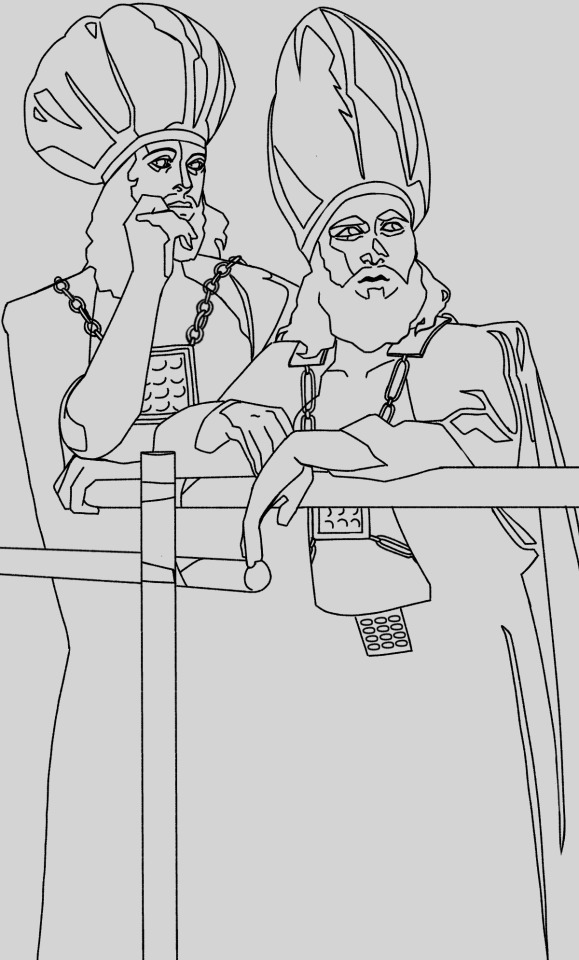

I love their portrayal in Jesus Christ Superstar 1973 (as a retelling of the biblical narrative and not considering the real historical events). It convey their strategic thinking and worries concerning their own power, which are shown in the book of John.
Hope you like the drawing! If you have anything to add or comment, please don't feel reluctant to share it <3
94 notes
·
View notes
Text
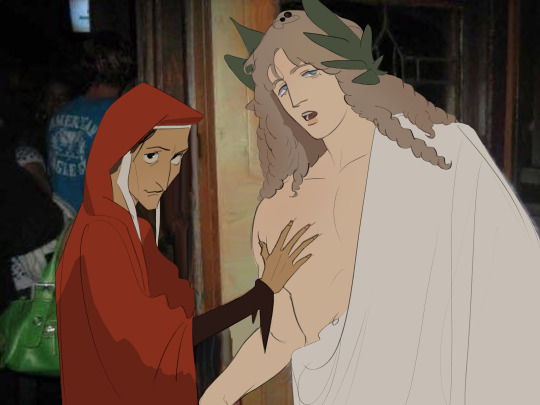
the reason i dont draw virgil with his tits out
732 notes
·
View notes
Text

Get in The Fucking Armor, Achilles!





My first project from Vertex school's game art program, every thing except for the mannequin are my own. Modeled in Blender, textured in substance painter, rendered in UE5.
231 notes
·
View notes
Text
Antinous🗡️💀


I noticed I had never posted my stylized sketches. So here it is some doodles of Antinous
I like him very much
I'm planning on drawing full illustrations of him and Telemachus
238 notes
·
View notes
Text
Athena🦉🏺✨


Athena drawing on my sketchbook based on that statue of her
However, I have no informations about the statue. If anyone has any clue of it's name, age, origins, etc.. please share with us
I still need to learn how to draw classic statues' hair, because it's not looking good
50 notes
·
View notes
Text
GRRRRRRR THEY LOOK SO BEAUTIFUL ON THAT ARTSTYLE
Fight little wolf fight🎶🐾









the badass & the cute little young prince combo is so good
587 notes
·
View notes
Text
I'M GONNA BE INSANE WHEN THE WHOLE ANIMATIC COME OUT
Apollo's part is done! ☀
3K notes
·
View notes

